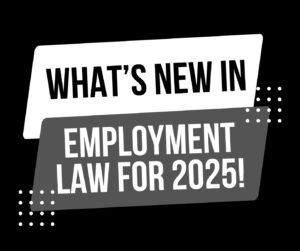Two recent Court of appeals decisions are of particular significance to those who handle wrongful termination, discrimination and harassment cases.
The recent decision in Kruitbosch v. Bakersfield Recovery Services is a really good lesson in how an organization’s response to a harassment complaint can create separate considerations. There, the employee reported off-site harassment by a coworker. The employer responded that nothing could be done since the conduct occurred off site, but then the HR representative made certain social media posts and comments that the employee interpreted as mocking his complaint. The employee resigned and brought suit. The court found that while the original off-site conduct was not sufficiently actionable because it was not work related, it did find that the subsequent response by the HR representative could support a hostile work environment claim under FEHA.
This is a good lesson that an organization not only needs to have proper policies and procedures, but that the manner in which it responds to complaints and how it goes about conducting its investigation, can also have profound consequences.
Another important case I want to mention is Bronshteyn v. Dept. of Consumer Affairs. This case demonstrates how litigation decisions that are incorrectly made can be unbelievably costly. There, an employee with fibromyalgia sued a state agency alleging disability discrimination and failure to accommodate. The agency resisted early settlement attempts, and instead pursued vigorous and extensive litigation, including the filing of multiple motions and engaging in a six-week jury trial. The jury ended up awarding the plaintiff over $3.3 million in damages and then on top of that the court awarded nearly $4.9 million in attorneys’ fees and costs.
This case is an example of litigation decisions that went really bad. The lesson is that if the employer is going to really aggressively fight the case, it needs to understand as early as possible the risks and exposure it faces, and be confident that it has the evidence to prevail.
The lesson in both these cases show that a proper preparation and investigation at the outset is critical.
With a proper investigation and analysis at the outset, complex harassment and discrimination cases may be suitable for early mediation. If the employer really understands what occurred, and what the potential exposure and risk is, it can determine whether it really wants to fight the case, or whether it wants to pursue an early resolution. If it decides the latter, it will certainly have a better understanding of the potential value of the case.











